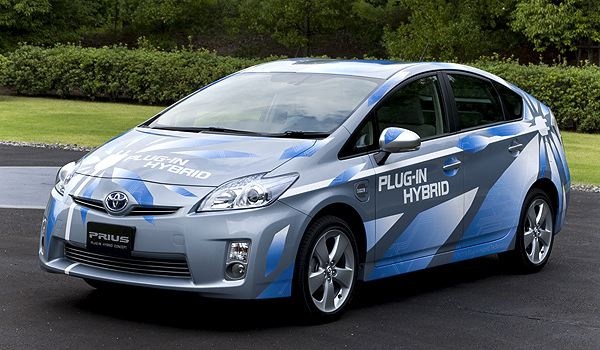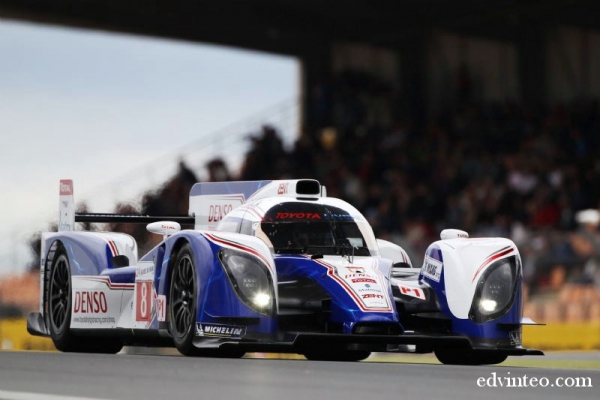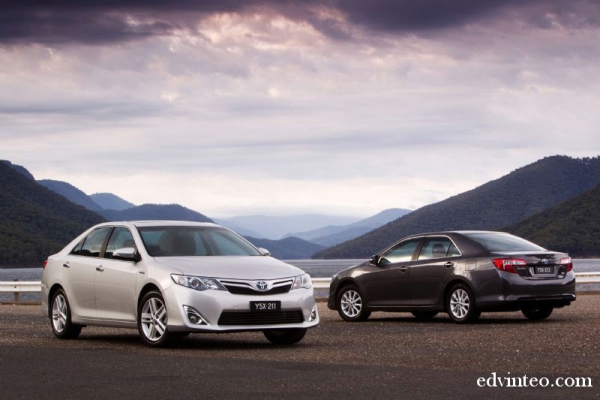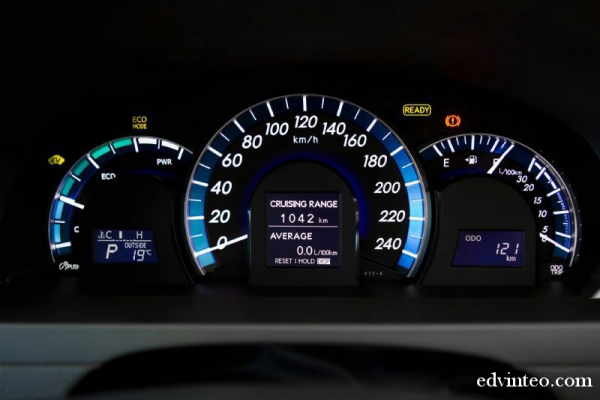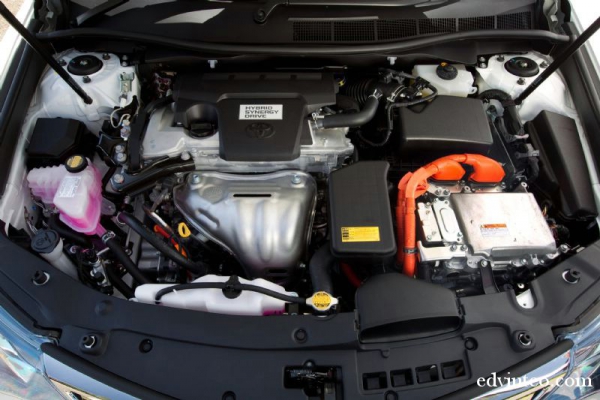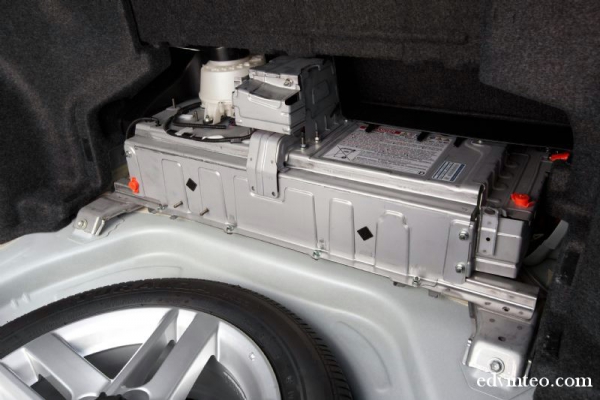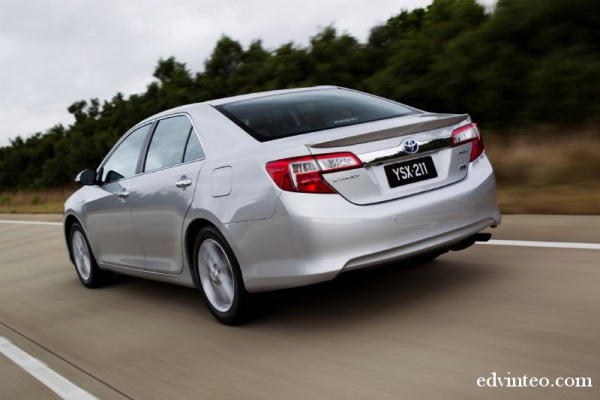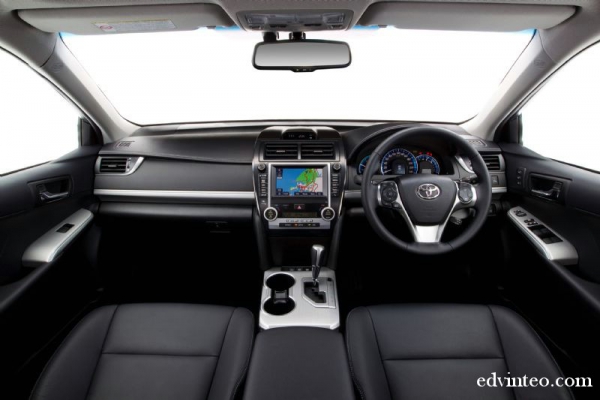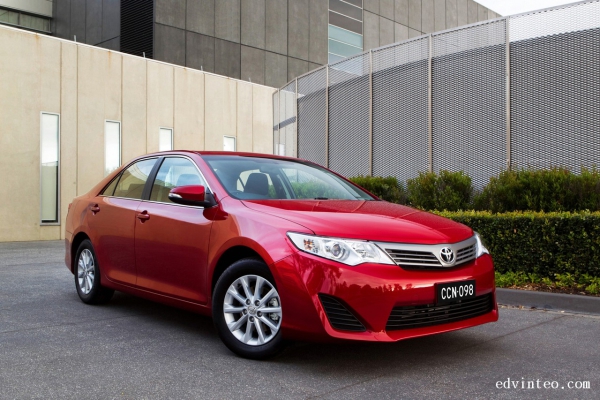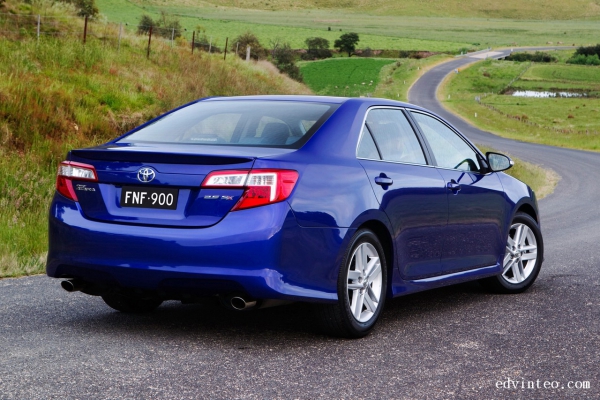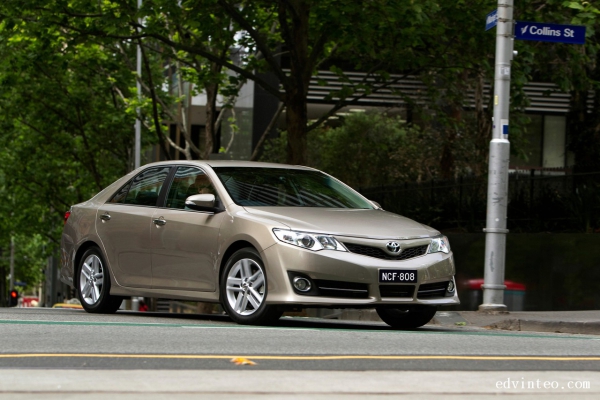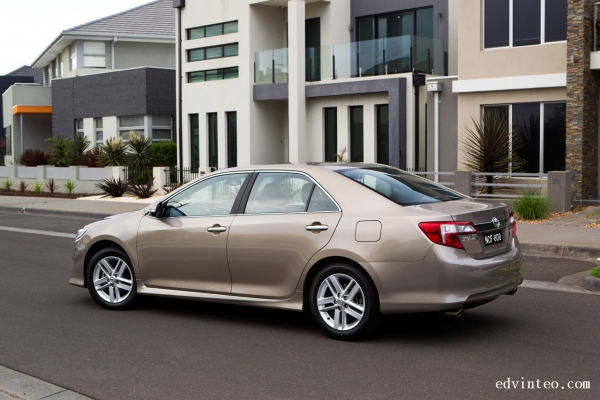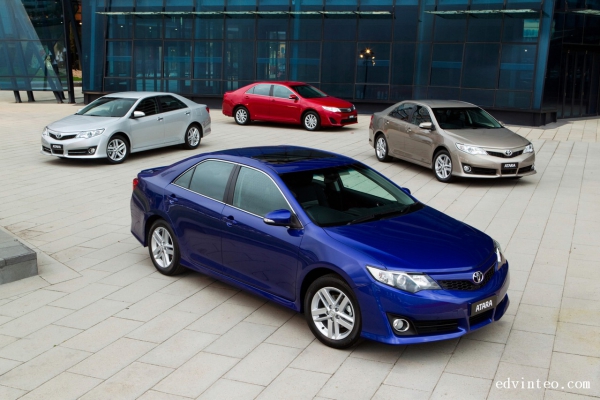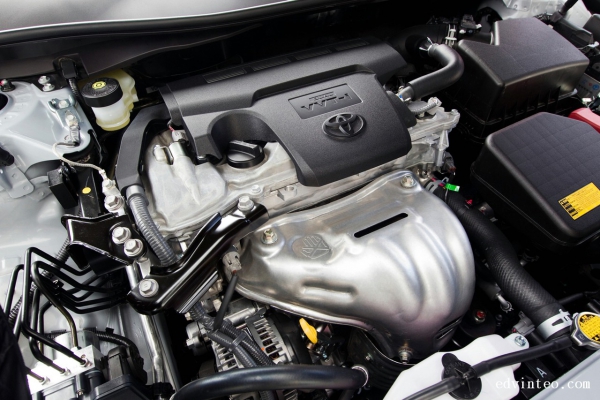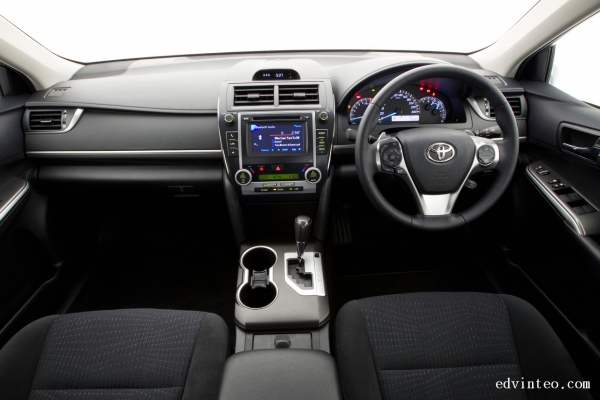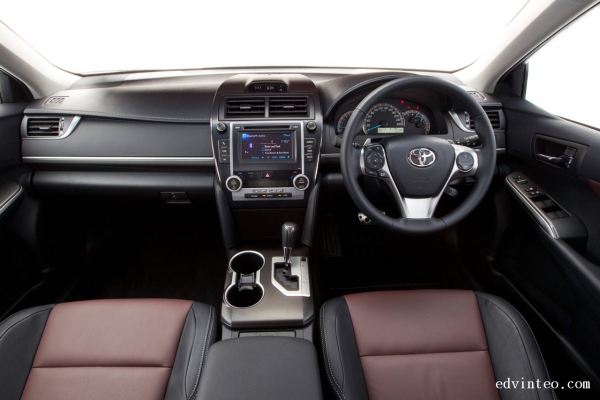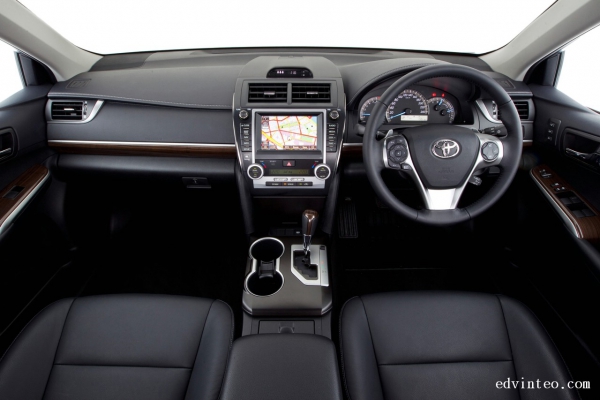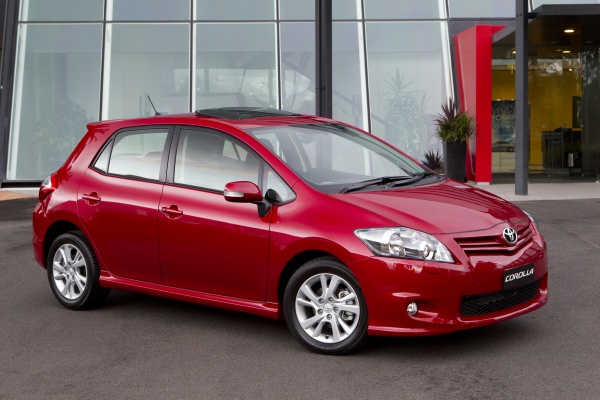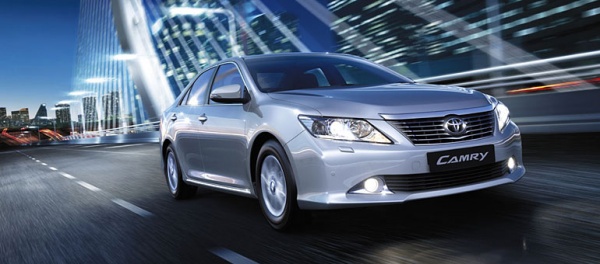Toyota Australia has released an all-new 7th generation Camry that debuts a contemporary design with improved driving dynamics and a more spacious interior. Anyway, it took me quite awhile to compile the photos and figure out the new features and enhancements.
The all-new 2012 Toyota Camry combines a new 2.5-litre 4-cylinder engine and 6-speed automatic transmission that deliver better performance, efficiency and lower emissions. The Australian version of the all-new Camry is remained built in Australia. The new car now features a more comfortable ride, better handling, better safety features and added refinement, including an even quieter cabin.
The all-new 2012 Toyota Camry in Australia offers in two distinct looks – an entry-level Altise and three new Atara variants.
Atara models have unique styling, including the lower-body design, a sporty mesh upper grille, prominent side skirts and twin exhausts. Advanced features at the top of the range include a blind-spot monitor to help prevent collisions and automatic high beam that automatically dips headlights at night to avoid blinding other drivers. The new range arrives with zero price increases for the Altise at AUD 30,490 and the top-of-the-range Atara SL at AUD 39,990, which replaces the Grande.
Basically, the price increases for Atara S (replaces Ateva) and Atara SX (Sportivo) are outweighed by added features.
According to Toyota Australia, body, electrical and chassis engineers from the Toyota Technical Center in Melbourne contributed to the development of Camry as a global car from as early as 2006. They also tuned and tested local versions to meet the demands of Australian motorists and road conditions, including calibrations for the electric power steering, blind-spot monitor and automatic high beam. Moreover, Designers at Toyota Style Australia were responsible for the interior fabrics and colour and trim of the local cars.
Camry Altise delivers 133kW of power and 231Nm of torque, substantial gains over the 117kW and 218Nm of the previous generation. Atara variants gain twin exhausts that help lift output to 135kW and 235Nm for gains of 15% and 8% respectively over the previous engine. All Atara grades – S, sporty SX and luxury SL – have paddle shifts at the driver's fingertips, delivering greater driver involvement and enjoyment.
Fuel economy across the range is just 7.8 litres/100km – an improvement of one litre per 100km, which means up to an extra 100km from a tank of unleaded petrol.
It has seven airbags, better braking and brake feel, vehicle stability and traction control, anti-skid brakes, a stronger body structure and a new seat frame that makes driving more comfortable. The introduction of electric power steering across the range, along with refinements to the suspension, has led to significant improvements to handling and ride comfort.
Altise is also equipped with 16-inch alloys, trip computer and an upgraded sound system with six speakers and controls on the steering wheel.
Atara S also features fog lamps, 17-inch alloys, smart entry and smart start, reversing camera, dual-zone air-conditioning, 6.1-inch touch-screen display audio, premium steering wheel and gearshift knob and an electric driver's seat with lumbar support.
Atara SX is distinguished by unique rear bumper, rear lip spoiler, sports pedals, sports suspension, black-tinted headlamps and sports leather-accented interior.
Top of the range Atara SL features JBL premium audio with 10 speakers, a 7-inch touch-screen display with satellite navigation, digital radio, RDS live traffic updates, reversing camera with back-guide monitor, blind-spot monitor, automatic high beam, electric front seats and rain-sensing wipers.
New Camry is covered by Toyota Service Advantage capped-price servicing, which has been extended to four years / 75,000km and up to 5 services at AUD130 per service for the new range. New accessories include 17-inch alloy wheels and body side mouldings with chrome inserts.
Price List – 2012 Toyota Camry Australia*
Altise – AUD30,490
Atara S – AUD33,490
Atara SX – AUD35,990
Atara SL – AUD39,990
Options*:
Altise: Steel wheels -AUD100, Metallic paint AUD400, Reverse camera AUD500
Atara S: Leather AUD1,500, Leather + Moonroof AUD3,450
Atara S, SL, SX: Moonroof AUD1,950
Summary of the new 2012 Toyota Camry
- Increased interior space
- 46mm increased rear-seat knee room
- 50mm increased knee room for rear-centre seat
- 15mm increase in couple distance
- Increased safety equipment
- Seven SRS airbags including new driver's knee airbag on all models
- Seatbelt warning indicators for rear seats
- Increased performance and economy
- 0-100km/h in 9.3 seconds
- Fuel economy of 7.8 litres/100km
- 2.5-litre dual VVT-i engine (Altise: 133kW and 231Nm, Atara: 135kW and 235Nm)
- Sequential six-speed transmission
- Paddle shift on three Atara grades, including Sports mode with throttle blipping control on downshifts
- ECO indicator on all grades
- All-new chassis and steering package
- Improved ride, handling, stability and braking
- Electric power-assisted steering for the first time on Camry petrol model
- All-new steering control features which improve steering feedback
- Vortex effect underbody aerodynamics for increased stability
- New over-body aerodynamic features
- Improved driving comfort – seat design, steering wheel position, steering column angle, 15mm increase in driver's seat height adjustment
- 60/40 split-fold rear seat on all grades (new to Atara SX)
- Driver's seat memory in Atara SL
- Auto-dipping exterior mirrors when reverse gear selected in high-grade
- 6.1-inch touch-screen display audio (up from 4.3-inch screen) is standard on Atara S/SX and optional on Altise
- Cross-type button steering wheel audio controls
- 10-speaker JBL premium audio with digital radio, 7-inch touch-screen display and 5.1-channel surround sound on Atara SL
- Side indicators on exterior mirrors on all models
- Trip computer now on all models
- AUX + USB input with iPod™ connectivity on all models
- Bluetooth™# streaming capability
- Lower interior noise levels and 'sophisticated' interior sound balance for improved conversation clarity
- Leather-accented seats on Atara SX grade
- Blind spot monitor (BSM) on Atara SL
- Automatic high beam headlamps on Atara SL
- Reversing camera^ with static line back monitor on Atara S/SX and back guide monitor on Atara SL
- Smart entry/start on S and SX
Photo Gallery: 2012 Toyota Camry Australia

